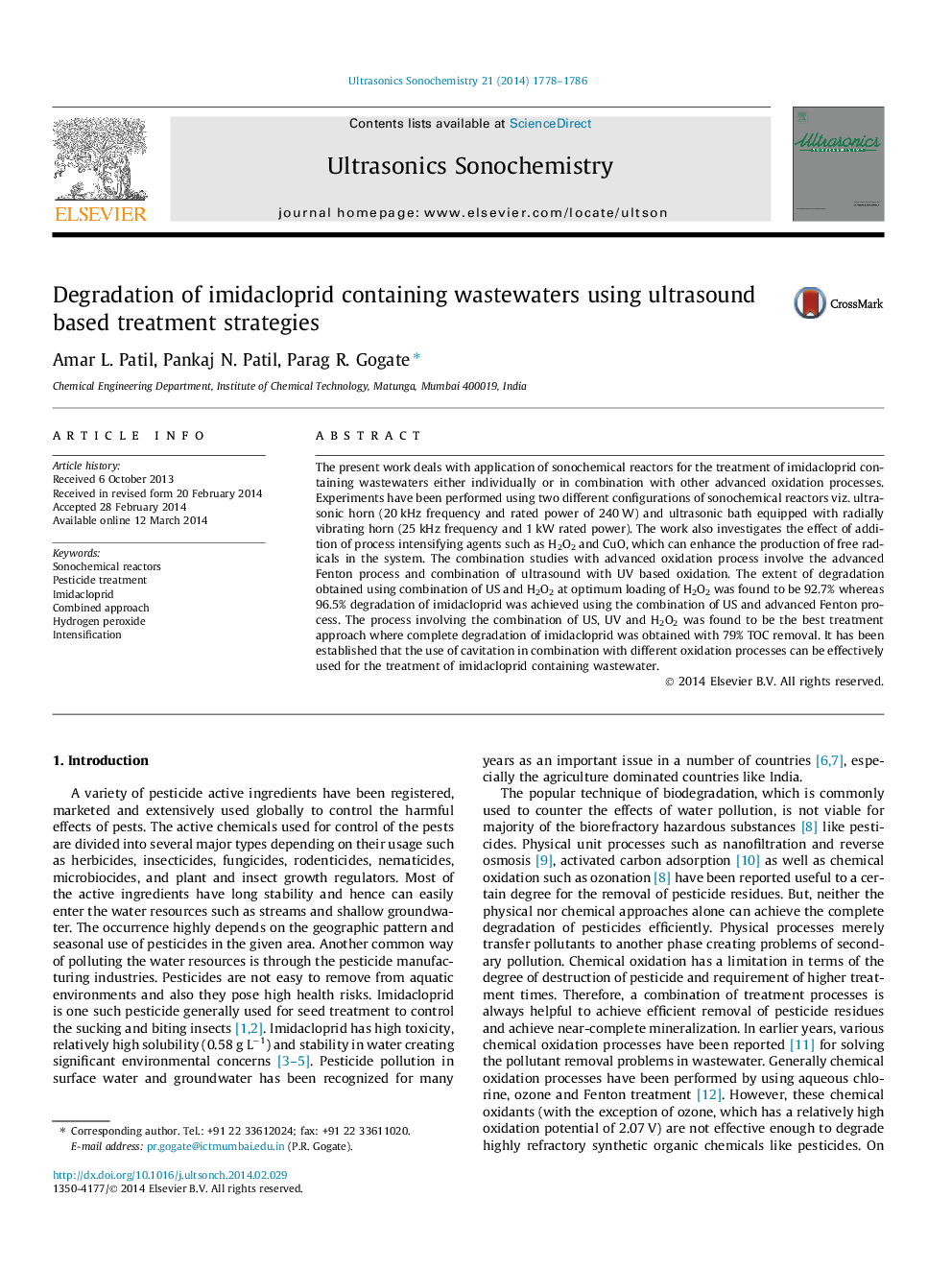| Article ID | Journal | Published Year | Pages | File Type |
|---|---|---|---|---|
| 1266104 | Ultrasonics Sonochemistry | 2014 | 9 Pages |
•First depiction of the use of sonochemical reactors for imidacloprid degradation.•Combined processes can result in complete removal.•Cavitational yield calculations indicate superiority of large scale design.•Kinetic mechanism depends on the process intensification approach.
The present work deals with application of sonochemical reactors for the treatment of imidacloprid containing wastewaters either individually or in combination with other advanced oxidation processes. Experiments have been performed using two different configurations of sonochemical reactors viz. ultrasonic horn (20 kHz frequency and rated power of 240 W) and ultrasonic bath equipped with radially vibrating horn (25 kHz frequency and 1 kW rated power). The work also investigates the effect of addition of process intensifying agents such as H2O2 and CuO, which can enhance the production of free radicals in the system. The combination studies with advanced oxidation process involve the advanced Fenton process and combination of ultrasound with UV based oxidation. The extent of degradation obtained using combination of US and H2O2 at optimum loading of H2O2 was found to be 92.7% whereas 96.5% degradation of imidacloprid was achieved using the combination of US and advanced Fenton process. The process involving the combination of US, UV and H2O2 was found to be the best treatment approach where complete degradation of imidacloprid was obtained with 79% TOC removal. It has been established that the use of cavitation in combination with different oxidation processes can be effectively used for the treatment of imidacloprid containing wastewater.
